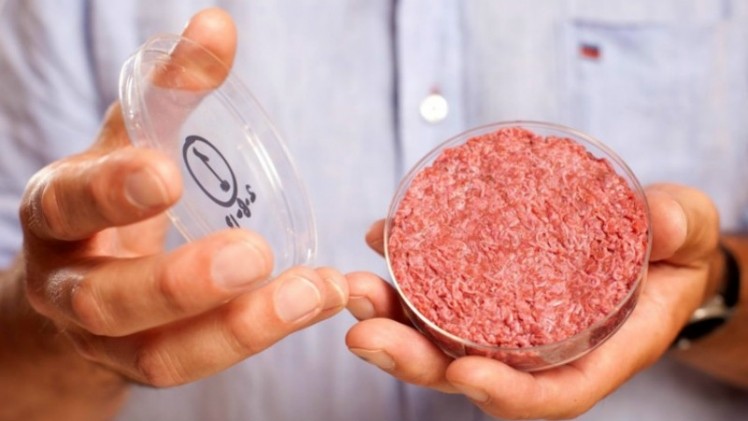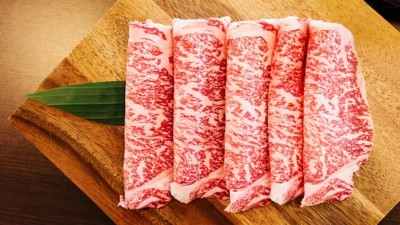Flavour and cost remain clean meat’s major hurdles, but ‘customisable products’ are on the horizon – Study

The study was conducted by the Israel Institute of Technology as a comprehensive review of over 300 international studies on clean meat. It was edited by Professor Mark Post, who created the world’s first cell-based meat burger patty in 2013 and is the Chief Scientific Officer of clean meat company Mosa Meats.
“As with any technology, initial prices tend to be extremely high until the product is commercialised, production is made efficient, and then products are sold en masse,” Mosa Meats Operations Co-ordinater Beckie Calder-Flynn told FoodNavigator-Asia on behalf of Professor Post.
“The first burger cost €250,000 (US$278,459) to produce [and] was funded by Sergey Brin, the co-founder of Google. [The] burger was this expensive in 2013 because back then it was novel science, and we were producing at a very small scale.”
According to the study, cost is most likely the ‘key hurdle’ for the cell-based clean meat industry to tackle.
“[This is because] clean meat borrows tools from the expensive and heavily regulated field of regenerative medicine, and applies them in the food industry, which has one of the lowest margins of profit,” said the authors.
“[Research has shown that some] 55% to 95% of the production cost could be attributed to [growth medium] use, and that 99% of the media cost can be attributed to growth factors (substances to stimulate growth).”
The use of cells that produce growth factors (which would be a cheaper alternative) to replace pure growth factors was cited as a possibility, but the authors cautioned that this option could not guarantee a fixed growth factor concentration as there were multiple factors that could influence the live cells’ activity.
“Two alternative approaches are to produce these molecule at a lower grade of purity (or without purification), or to generate inexpensive analogues of these molecules,” they said.
As for flavours, according to the study, flavour assessments are considered a ‘key challenge’ in clean meat research, mainly due to the sheer amount and complexity of factors involved.
“Meat contains thousands of flavour molecules, including amino acids, lipids, short peptides, flavour volatiles [and many more],” wrote the authors.
“[There is also the hurdle of] small sizes of lab samples - standard protocols used to analyse meat quality are designed to test samples ranging from whole animals to [at least] tens of grams – [this amount is] at least [1,000 times] larger than experimental lab samples.”
The limitations of current analytical methods were also found to be a major challenge.
“Light diffraction is a fast, inexpensive and non-invasive meat analysis method [and] scaling down this technology could accelerate clean meat research. However, [it] only provides an estimate of main components, such as fat and collagen content,” said the authors.
The missing piece here to obtaining more detailed data in order to develop new types of meat tissue was said to be molecular profiling, but at present this is ‘slower and more expensive’.
Not impossible
That said, Mosa Meats is positive that these challenges can be overcome within the next 10 years.
“[We] are currently working on up-scaling our equipment so that we can produce large quantities quickly and efficiently. The larger the scale you produce at, the cheaper the cost,” said Calder-Flynn.
“We estimate that commercialisation will bring the price of a burger down to €9 (US$10.03), compared with the €250,000 (US$278,459) it cost to make the first burger. The cost of a hamburger in the supermarket is around €1, and we expect that with further efficiency improvements we will be able to bring the price down to this level over the next decade.”
Overall, the efficiency of cultured meat production is expected to – eventually - give it an edge over conventional meat costs, so in the long run, it ‘should be cheaper’.
“Reasons for this include eliminating the cost of raising, transporting, slaughtering, and processing huge numbers of animals, and only requiring a small number of animals to provide us with sample cells (for example, one cell sample can create up to 10,000kg of cultured meat,” she added.
“Our estimates suggest that at that rate we would only need 150 cows to satisfy the world’s current meat demand); no costs from requiring antibiotics for the animals, and very little costs of other requirements like land use and animal feed because of the very small number of donor animals required.”
As for flavour, she told us that Mosa Meat technologies can ‘theoretically make cultured meat from any animal that has muscle-specific stem cells in the muscles’.
“As far as we know that holds for all the common animals used for food such as mammals, birds and fish,” said Calder-Flynn.
“To make a specific cut of meat (like ribs) we would need to mimic the exact muscle and cell makeup of that piece of meat. That is very complex, but we expect to be able to do that in future.”
Additionally, the study authors expect cell-based meat to offer far more benefits in terms of customisation.
“[The] fine-tuning of meat components is difficult in live animals, [but] in clean meat, cells are cultured in-vitro in a customisable and controlled platform. The simple and precise manipulation of the cell microenvironment could be used to fine-tune meat traits,” they said.
“In addition, combinations of cells from different species may give rise to new and unprecedented flavours. This simple, fast and intuitive meat manipulation platform can facilitate a new R&D field of customisable meat products.”
Study: Tissue Engineering for Clean Meat Production
Source: Frontiers in Sustainable Food Systems
Authors: Ben-Arye, T. and Levenberg, S.
















